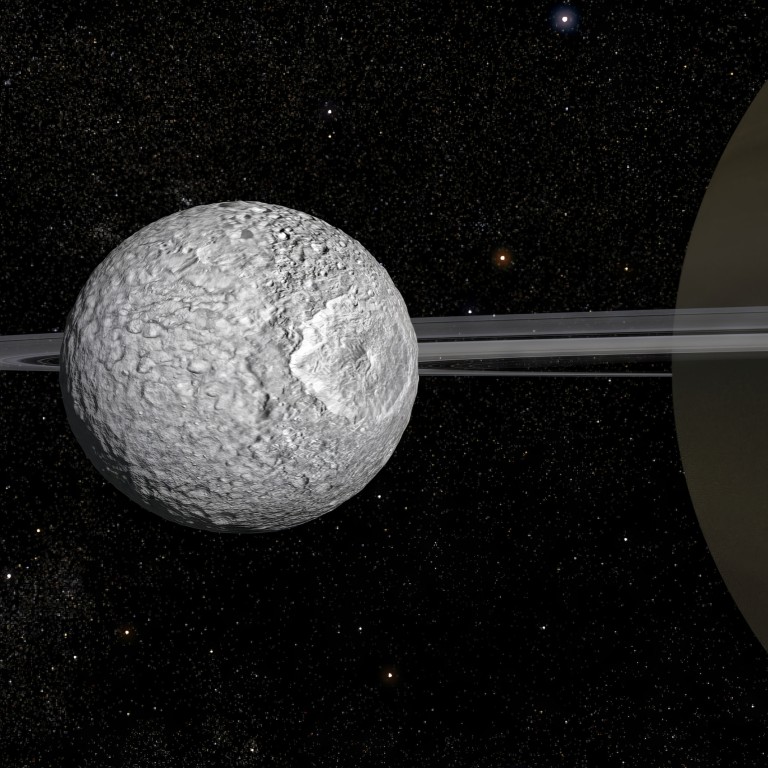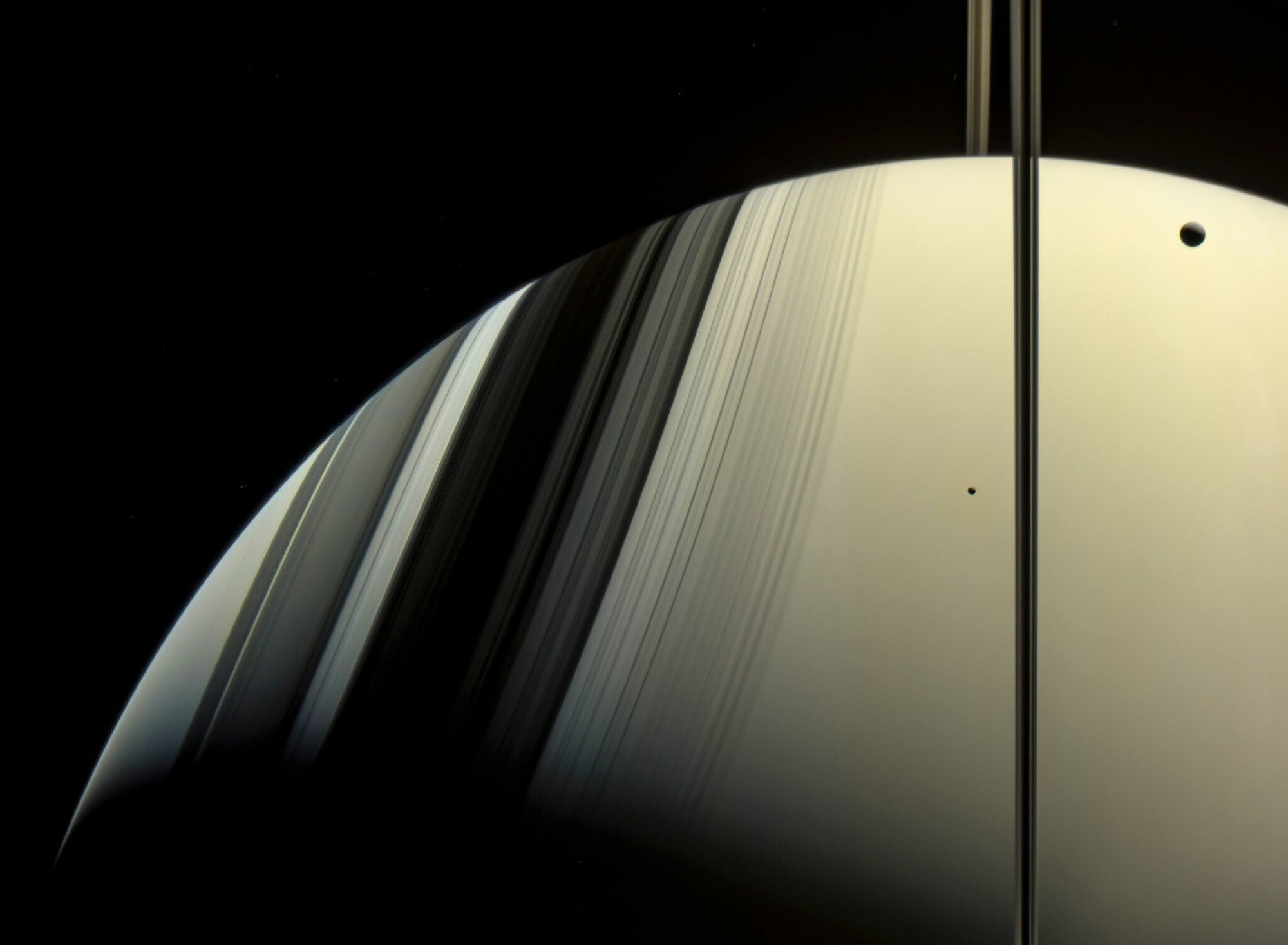
Hidden ocean found in Saturn’s smallest moon by Chinese and European scientists
- Discovery will motivate examination of similar-sized icy moons throughout the solar system, according to planetary experts
- Mimas has a surface area about the size of Spain and is similar in appearance to the Death Star in the popular film franchise
In a paper published on Thursday by the journal Nature, the team said the global ocean ebbs and flows about 20km (12 miles) beneath the heavily cratered and geologically inactive icy shell of Mimas, which has a surface area about the size of Spain.
Lead author Valery Lainey from the Paris Observatory in France said the likelihood of Mimas – which is roughly 400km (249 miles) in diameter – hosting an internal ocean seemed “extremely low”.
“One would never expect to see so much water inside it – more than 50 per cent of Mimas’ volume is taken by liquid water,” he said.

The paper’s co-authors include researchers from Jinan University in Guangzhou, southern China, Queen Mary University of London, and the University of Nantes and the University of Franche-Comté in France.
Experts who were not involved in the research said the findings would change the general picture of what ocean worlds look like and motivate a thorough examination of similar-sized icy moons throughout the solar system.
“Mimas has an important lesson to teach scientists: intuition is excellent for generating hypotheses, but not sufficient for drawing conclusions,” a commentary on the paper by planetary scientists Matija Ćuk and Alyssa Rhoden said.
“The solar system will always have surprises in store, and researchers must be open enough to new ideas and unexpected possibilities to recognise them,” wrote Ćuk, from the SETI Institute in California, and Rhoden from Southwest Research Institute in Colorado.
Mimas was discovered by astronomer William Herschel in 1789 and is notable for a gigantic crater that gives it the appearance of the Death Star space station in the Star Wars films.
Just as we always see the same side of the moon from Earth, Mimas is tidally locked to Saturn with one side eternally facing its parent planet. However, its internal structure can create a wobbling effect, causing it to oscillate slightly around its axis.
New theory challenges origin story on how giant planets found their orbit
Lainey and his colleagues have been studying Mimas for over a decade, using data from Nasa’s Cassini spacecraft. They realised that the oscillations were much larger than expected, suggesting either an elongated rocky core or an internal ocean.
To determine which scenario was more likely, the team turned to a detailed analysis of the rotation of Mimas around Saturn. The researchers were able to calculate Mimas’ orbital motion and position extremely accurately, to within a few hundred metres.
They found that while Mimas orbits around Saturn in one direction, its orbital path moves in the opposite direction over time. After ruling out other effects, the scientists decided that the tiny moon’s motion would not be possible if it was fully solid.
Nasa’s Saturn explorer Cassini bids farewell in blaze of cosmic glory
“We eventually had to look at Mimas’ orbit with the Cassini data to prove that only the ocean interior model works,” Lainey said.
“We were extremely excited to see that our original approach based on celestial mechanics worked well to reveal Mimas’ interior.”
While most of the Saturnian system is composed of water ice – including its iconic rings – the liquid water inside Mimas is simply due to the melting of its icy shell, according to Lainey.
Mimas is the smallest moon known so far to harbour a global ocean. “The smaller a celestial object, the faster it can lose its internal heat. In the near future, its icy shell may start to get thicker again,” he said.

